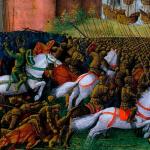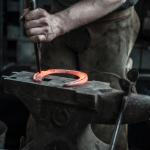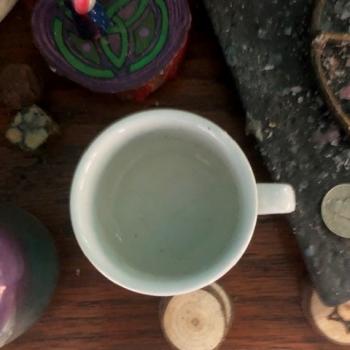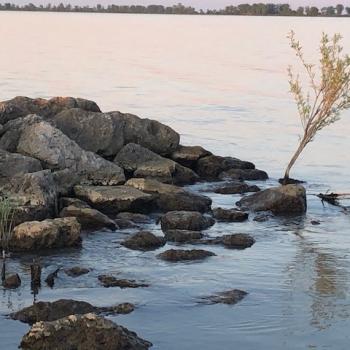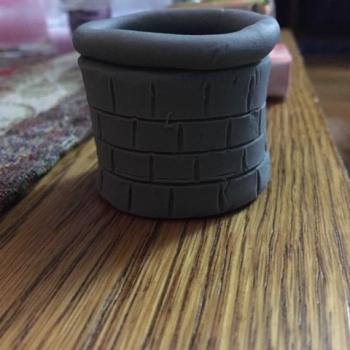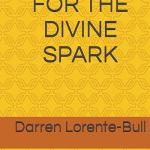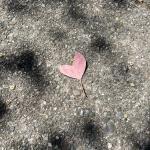Imbolc pronounced IM-olg or IM-olk, evolved into St. Brighid’s day, and is considered the first day of spring. St Brighid’s feast is a February 1st continuation of Imbolc pagan traditions. It is one of the four fire festivals celebrated by the ancient Celts. It probably occurred on what we consider Feb 11th, due to the shift to the Gregorian calendar. But the Fire festivals are celebrated always on the kalends of the month sharing the same Irish name as the festival.
If you want to join in any of these practices in Texas this Feb, join us for the Imbolc Retreat 2019.
Imbolc and St. Brighid’s Day
Its many names are Lá Fhéile Bríde, Laa’l Breeshey, Gwyl Mair Dechrau’r Gwanwyn, Goel Kantolyon, Gouel Varia ar Gouloú, Imbolc, Ogronia(Kondratiev 147) and Oímealg(146). Alexei tells us that the Giamos half of the year has its midpoint at Imbolc, and the waning of the winter begins. The name Imbolc comes from words meaning milk or lactation, and Old Celtic Oui-melko, or “Ewe’s milk”. It was a time of returning fertility, and so is associated with the Irish goddess of birth and childbirth.
Brighid as a saint has well-known lore about her life, however, the goddess she represents goes back to feats of the Irish mythological cycle. She connects to British and continental versions of herself: Brigandu, Brigantia, and the Romans observed her as a guise of Minerva. Her name means “high” or “exalted” one(148). Briga and bri and brig are names for high places, but also imply that they are imparting a fortitude and strength. Alexei calls it an upwelling of ‘force’. In our folk magics, the closest thing some recons have to energy are Bri and Bua. These are ‘power’ and ‘swelling’. Bri is inherent to a thing, while bua is imparted by action, say the ill energy of a battle being put into the ground itself, on top of the plains natural bri.
She is of concern to the three functions respectively; first function as a poet, the second as a smith of weapons, and the third function as a healer and cunning woman, a Bean Feasa. In each of these roles, she is the fire. Among poets, she’s the fire in the head, among healers, she’s the compassion fire in the heart, and among smiths, she’s the fire in the hand. As the exalted one, she’s the fire, the briga power in the fire, which raises itself up. As the daughter of Dagda, whose many names include Aed(Fire)(Rees 30), she is the Irish Agni which brings forth other gods, or at least skilled feats of magic in each of these three professions as Fire Tender. Dagda is Lord of Knowledge, and she gives access to it. Brighid’s popularity is due to her being a tri-functional goddess. She has a number of mystical animals and is particularly fond of animals and cattle.
There are poems speaking to the liminal nature of Imbolc, saying that every hole is either black or white on the day… from snow, or every other day being fine or unfit after her day. While that last bit might be related to lucky and unlucky days of the Coligny calendar, it more speaks to the growing fineness of the weather. Brighid’s pagan and Christian customs were properly melded together.
It was the starting point of the spring because it was time to get ready for sowing crops(Danaher 13). Brighid’s lore and spirit as a saint and goddess surrounds food production, which is why she brings and blesses food at Imbolc. Plow songs, a form of charming the plow, were likely a big part of the preparations for sowing (Sagen).
1. Make Brighid’s Crosses
Making St. Brighid’s crosses was very widespread and popular. They are made on the eve of the feast day. The native name for them is cros Bríde or bogha Bríde. They were hung in homes, cowsheds, and stables. Little crosses were called Crosóg.
The diamond lozenge cross was the most common. These were made of rushes or straw. You can put twigs across the legs of the cross, making crosses at the ends of the legs. You can make more elaborate ones by increasing the number of lozenges or forming a wooden lattice about the cross by weaving the intersections(Danaher 16).
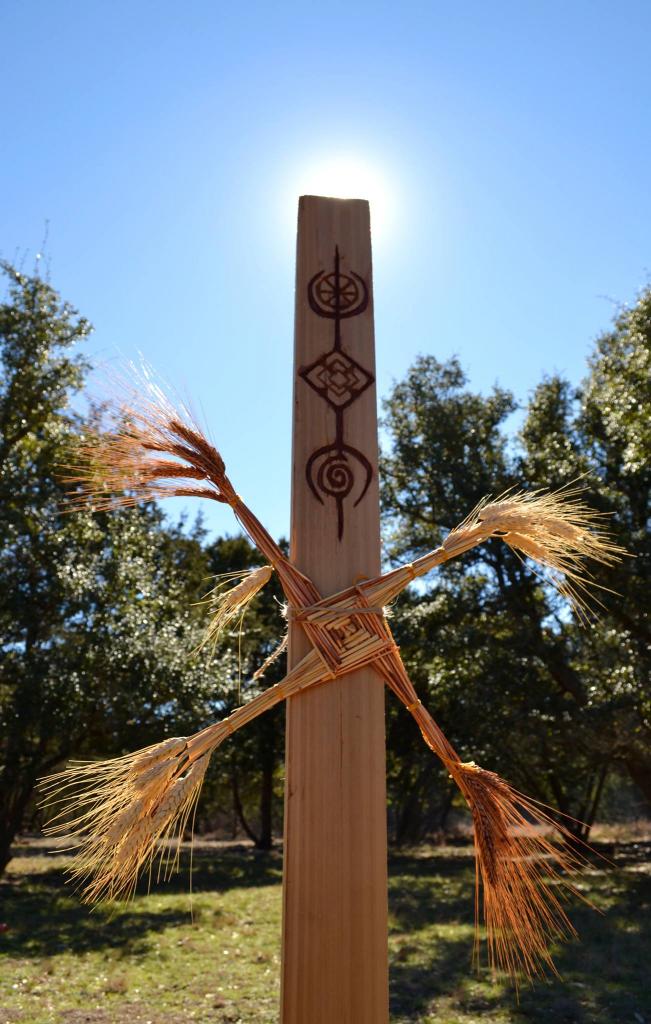
The next most popular form is the cross made with rushes. The three-legged crosses are a type of these. They could start at 3 or 4 rushes for children’s practices, and adults would use more and make more elaborate ones. The three-legged ones are hung in the cowsheds while four-legged ones are hung in the home in Antrim, Armagh, Down, and Donegal. It is a form of the swastika in the sense that it has rotational symmetry and therefore is a tetraskelion. There is debate over this, but looking at the Indo-European commonalities between sun wheels and fire deities like Brighid, we are making a safe and educated assumption.
The beautiful most commonly known today is the bent reed version where the reed is interlacing and the arms are tied at the ends. This one was hung in the stable in some areas, while other areas used this one as the main one in the home. Multiple sets of these were connected to make a cross of crosses that looked like each arm made of interlacing bows(17).
Two pieces of wood were tacked together to make a fourth kind of cross in some small communities. The poem Hesperia-Neso-Graphia from 1735 has a verse that goes(18):
St Bridget’s cross hung over door
Which did the house from fire secure
As Gillo thought O powerful charm
To keep a house from taking harm;
And tho’ the dogs and servants slept,
By Bridget’s care the house was kept.
The folk belief in the cross is that it protects against lightning and fire.
Making the crosses was attended by charming and ritualistic ceremony. After they were made they were sprinkled with holy water, presumably from a well and not a church. They were then hung up in their appropriate places with an appropriate prayer.
While the local lore around the prayer and cross was originally to renew the agreement with God and to remind yourself of the Holy Trinity(19, 26), we can safely co-opt this backward to the renewing of our agreements with Trinity of the goddess Bríd. Remember, in our reconstructionism, we’re aiming to have our practices recognizable by the ancestors, rather than be exactly like theirs.
On the eve of the feast of the day, The person who acts as “the Bridget” or the head of the household(21), leaves the house and comes back in with the rushes. When she knocks asking folks to “Go down on your knees, do homage, and let Blessed Bridget enter the house”(20). The response upon the third time is generally “Oh come in, you are a hundred times welcome!”. She then places the rushes under the table and says grace, “Bless us, O God, bless our food and our drink; it is Thou who hast redeemed us at great price; deliver us from all evil!”(20).
Then a thanksgiving prayer is recited over a dinner. Afterward, the rushes are made into crosses. A cake of oat bread was also made into a cross, and in areas where this was done, this ‘strone’ is placed on the rushes. Pieces were taken off as prayers were recited, by folks who gathered around it. When fully consumed, the rushes were made into crosses and were sprinkled with holy water before being put over the inside of the door(21). Then the dinner is eaten(22). In some areas, last year’s crosses were taken down and this year’s were put up.
2. Make a Brídgeóg
Groups of young folks would go door to door almost like mummers, carrying a symbol of Brighid. While sometimes the cross, other times it was the Brídeóg, or effigy representing Brighid, that was taken around. These groups were led by a ‘captain’ or lead by a “Bridget”. Young girls would be chosen for this role in their groups, and girls who were named after the saint were especially chosen. This probably incentivized the naming of girls after the Saint among parents.
The effigy of Brighid, which less commonly was a redressed doll, but more commonly a specially made out of a sheaf of straw, was shaped into the figure of the saint and dressed appropriately. The main structure is made of a broom, churn dash or sticks. The head can be a carved turnip, mask or stuffed straw. It can be made to be beautiful or grotesque(24).
3. Make a Crown of Rushes
The effigy was carried to neighbors houses and was welcomed in as they announced they were bringing the Saint’s blessing into the home. They would hand out crosses they had made as well(25). The representative of Bridget, if a young woman, would wear a crown of rushes(Brighid’s Crown) and carry a woven shield, and a veil made from the strongest grasses near wetlands.
4. Make a Shield and Veil of Brighid
These were called the Cros Bhrighite(Cross Vreecha), the Sgiath Bhrighite(Geeah Vreecha), and the Crothán Bhrighite(CraHAWN Vreecha); or the Cross, Shield, and Veil of Brighid respectively. The young woman carrying these were considered An Brídeóg, or The Young Bridget. She would ask folks at their door if they’re “resolved to obey Gods Laws” and those of the church and to lead saintly lives like St. Brighid. Upon a yes, she would present the cross asking them to take the sword of St Brighid, which she vanquished her enemies with, and to take the cross for that house remembering to bear all burdens in life with good Christian fortitude like Brighid. The shield was then given while she asked them to shield with their faith, remembering the many enemies Brighid protected against it.
5. Go “Door to Door”
It is best to present these at pagan rites or in communities that honor these traditions.
When the veil was presented, the young Brighid representative asked if they would follow after Brighid’s example of virtue and piety. The senior woman of the home called upon the other women and girls to answer in the affirmative. The Brídeóg then said a litany about being chaste and virtuous. The cross was then raised, everyone would fall to their knees in prayer to God(26). They processed from door to door like this putting up crosses, shields, and veils they had made over doors. This is how Catholic control over the culture was instilled and maintained among Irish people(27). The little effigy brídeóg had many different construction methods and were varying sizes.
6. Dress Up While Doing It
The folks carrying the effigy dressed in all kinds of fanciful garments more recently, but in older times they’d wear white shirts, women’s skirts, and straw hats. This was the same attire worn by ‘strawboys’ at weddings. They were called ‘Biddies’, ‘biddy-boys’, ‘brídeóga’(31), and ‘Miss Biddy’ was what the representative of Brighid was called (29). After the encounter, they’d be given money and gifts and were off to the next house. Sometimes a short verse was said at the home. In Co. Clare, where my surname ancestors come from(29), the verse went like this:
Here is Bridget, Dressed in white,
Give her a penny for her night,
She is deaf, She is dumb,
She cannot talk, without a tongue.
7. Put out the Brat Bhrighite… or Several
A silk ribbon called the ribín Brighid was placed on the window sill on the eve of the feast to see if it would get longer. This is used to remedy headaches. It is drawn around a patient’s head three times with a short invocation to the father, son, and holy spirit of Christianity.
Another form of this is the Brat Bríde or the Bratóg Bríde(Bríd’s little brat). The brat or Brighid’s mantle was placed out on the eve of the festival. The folk belief was that it was touched by Brighid as she started wandering the land. If we look at the Scottish tales about Brighid and Aengus, we can rebuild a belief that the goddess is walking the land to touch things to bring spring about, recently freed and in need of hospitality(Kondratiev 152). Leaving the brat out would absorb her healing and vitality, the very same kind that begets the spring season each year. Some believed the brat gained power continually, while others believed it attained its greatest power after 7 years.
The brat could be any kind of clothing or cloth, possibly linen. It could be as small as a ribbon or as large as a mantle. Sometimes scarves or handkerchiefs would do the trick.
Each member of the family can put out a small piece of cloth they either plan to carry with them or already carry. You could leave out your umbrellas or any cloth, belt. Things like shoes and undergarments wouldn’t be acceptable, nothing you consider profane like foot funk can be considered sacred. Modern female witches might consider leaving out some period cloth for the year which can be used and to combined with existing menstruation magical practice to bolster that work. This piece of cloth can be put on the outer window sill, hung up outside, put on the doorstep or thrown up on the roof(Danaher 33). I imagine Irish migrants and fishermen wouldn’t be caught without a brat from the stories of survival at sea.
Some houses put all the cloth pieces in a basket on the doorstep to all be blessed by the Saint. While for any type of healing, the Brat was particularly good at pains of the head and headaches.
The ribín or brat Bhrighite is used to divine omens as well by its length. It was usually marked on the kitchen wall, similar to how our parents may have marked our height on the wooden column in the foyer. If the brat lengthened that was a good omen of good luck, long life, good crops, or the amount of healing power that was bestowed upon it.

8. Sew Brat Pieces into Clothing
The brat was also used to help cure infertility, ease pangs of labor in childbirth, and ward off envy, the evil eye, having your children be replaced by changelings. Pieces were cut off and sewn into every piece of a child’s clothing. If an animal was sick, the sign of the cross was made over it and the brat was placed over its back to encourage good milk production and healthy calves.
9. Step through a Brighid’s Girdle(Crios Bríde)
In Galway, the boys in the Biddy party would carry a long rope made into a loop at the end and four crosses of straw on it that has been interwoven into plaits. The occupants of the house would move through it to obtain the Saint’s Blessing. They would say an incantation as they passed through it(34):
Brighid’s girdle is my girdle
The girdle with the four crosses
Arise, kinfolk
And go out three times.
May whoever goes through my girdle
Be seven times better a year from now.
And then the boys said:
And whoever does no give us a penny may he break his leg!
The first correct way to go through the girdle is right leg first, then right arm, then right shoulder, then head, then left shoulder, then left arm, then left leg. Here are honored the folk magic custom of right-handedness, as associated with sunwise motion. Also, notice the order of opening is symmetric with the order of closing in reverse order. If you have a long skirt on, the correct way to go through the loop put over your heads, down around your waist and step out of it(35). In the far distant memory of the practitioners of these already-aged customs are the practices of passing cattle through the girdle of the Saint. This was done by making one big enough and fastening it to the threshold of the cowshed and driving the cows through it(35).
10. Focus on Sowing and Herds
A little white cloth containing a pinch of seeds from the grain used to make the crosses were hung by the Cros Bhrighite or left on the doorstep and mixed with the horde of seeds kept for planting to give the Saints blessing to the crops.
The residue of rushes and straw from the crosses, also used for Brighid’s bed, was laid down in the stable for the horses and cattle to ward off illness, and in the south of Donegal, the cattle was swatted with a switch made from the same material. Crosses over the door could be passed over specific animals who are sick(36). Spancells or ties of rope were tied to the calves and cattle. It was said that these put to rest restless animals and protected them from envy and evil. These weren’t to be sold as the luck in them would pass away from the seller of the cattle. These were made of the “threshold sheaf”, rushes from the bed, or leftover cross material(36).
11. Do Divination
People looked forward to the better weather, as the winter storms are no longer impeding fishing and farming alike. Although, extraordinary ideal weather is a bad omen of poor conditions to come. People did weather divinations and if they saw hedgehogs coming out of their holes it indicated that spring was to come sooner than later. If they returned, rain was expected, Rain was welcomed, as was the lengthening of daylight hours. In certain areas, work wasn’t permitted on Brighid’s feast day, and instead they visited her shrine doing devotions. Laborers steered clear of work which involved wheels turning, such as sewing machines, ploughing and smithwork in some areas(14). The same thing was done in Celtic countries which had serpents. Carmichael preserves in the Carmina Gadelica “On Bride’s morn the serpent will come out of the hole. I will not harm the serpent, nor will the serpent harm me.”(Kondratiev 156).
In addition to this, marriage divination was common, as always. To have an Imbolc blessed marriage was to carry Brighid’s blessing into it presumably. Young folks would sleep with spinning wheels and model ladders made from leftover cross material and put them under their pillow. The dreamer would see their future partner spinning the wheel or climbing the ladder. They would first be given as ‘love tokens’ to those you might want to marry, similar to St Valentines tokens in the US near the same time. After a couple exchanged them and dreamt of each other, they were sure to marry(Danaher 37).
If on the feast day, a lark sang, it was seen as a sign of spring. Brighid has a strong connection with birds which sing.
Brighid’s flower is the dandelion, likely because it is the first flower to appear of spring right after her festival.
There is a custom on Imbolc to drink from a horn goblet, probably because horn’s tendency to be light and therefore bounce several times, and to throw it over your shoulder to see which way it lands. It is thrown between two candles, signifying liminality between this world and the next. If it lands with rim to floor, an early death would come to the thrower. If base to the floor, an omen of good luck was understood(Kondratiev 156).
12. Offer Beer and the Winter’s Homebrew
Brighid is a famous homebrewer, and like Goibniu, likes beer(UPG). She dispenses ale to any visitor regardless of rank. Dandelion wine is a potent wine. Give her beer and wine of all sorts in addition to milk, honey, and butter.
13. Gather the Hoar Frost
The hoar frost, gathered from the grass on the Feast day is a sure fire remedy for headaches. Special food was given to the cattle due to the Saint’s love for animals.
Folks took water from one of the many wells associated with the Saint, dedicated to her, and sprinkled it around the house and on the dwellers, the cattle and the fields. Probably the ploughing equipment and yokes as well.
14. Practice Candlemas
Weather divinations were also done on Candlemas day, Feb 2nd. Good weather on this day was bad news bears for the spring sowing. Candles were blessed in the church and used to bring blessings into the home(Danaher 38). Like Nollag, candles would be lit in every window of the house(Kondratiev 151). Also like Nollag, a wandering Brighid needing hospitality continues the main giamos seasonal theme: compassion for those in the rough cold. Which is why candles were donated to the church and poor as folks no longer needed to use them for early morning work by this time of year.
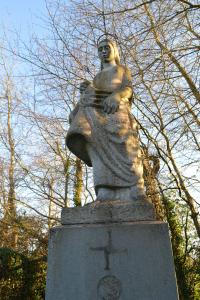
15. Feasting
The dinner on the feast day was usually lit by a single candle. Bairín breac was the seasonal ‘staple’ in Ireland while it was crepes in Brittany(Kondratiev 157).The house was cleaned for the feast day on Imbolc Eve and a seasonal meal prepared. Seasonal foods were sowans, bannocks, apple–cakes, dumplings, fruit cakes and colcannon. On Imbolc neighbors came and shared ale and a tobacco pipe. Butter was sacred and formal at this time. Milk has returned to the cattle, butter is a gift of nourishment. Butter was given to poor families, along with buttermilk and food from festive slaughter. In didn’t find any mention of what was slaughtered for the feast. Brighid walks the countryside blessing cattle and homes(Danaher 15).
16. Putting Butter Out
Making Brighid feel welcome was essential. It was common to place a piece of cake and butter on the window sill outside. It was eaten by the wandering poor person or brought in an eaten by the family after, Brighid had blessed it. The Brídeóg party might also take it in some versions of the custom. A sheaf of corn was put next to this offering for Brighid’s white cow. Sometimes this was straw laid at the threshold. You can make this offering consist of porridge as well. Sometimes a whole meal was placed inside for Brighid and when her visit was over, the first impoverished person who visited was invited to eat it(15). There are traditions involving other things being left out so you can use your own discretion as to what you give her.
17. Planting, Plough Songs
Brighid’s function as the smith, allows the magical transformation of natural ore into symbols of Gaelic culture and the Tribe itself. Through Brighid’s blessing of the smiths fire, the work of smiths can be done so that the rest of the Tribe’s work of turning nature into culture can begin for the year. Brighid’s blessing is the starting domino which cascades down through the rest of the Tribes creative endeavors(Kondratiev 157). We can take smithed tools and utilities and bless them with Brighid’s magic. If you have access to a blacksmith’s work, you might be better off having a tilling device made for the seasons planting, blessed in rites to Brighid.
18. Make a Brídeóg Bed
The rest of the material was neatly laid out to form a bed for the Brídeóg. This bed is just a bundle of remnants laid out on the floor near the hearth, sometimes with a white cloth covering it(Danaher 23). Rushlights were made from this material too and lit for Brighid. A bit of this material was made into a ring and hung on the spinning wheel for protection and blessings on the work for the next year. The rushes made into the bed was thought to have healing powers and were burned on the fire the following morning for rapid cures. You can put a pinch of this under your mattress or pillow to ward disease.
Ritual Themes
- Blessing Increase
- Hearth Activities
- Planting
- Cleansing Away Impurities
- Return of Warmth
- Nature’s Response to Weather as Omens
- Freeing of Brighid from the Hag’s imprisonment in Ben Nevin
- Effigy or Personification of Brighid
Sources
Carmichael, Alexander. Carmina Gadelica. Edinburgh: Scottish Acad., 1983. Print.
Danaher, Kevin. The Year in Ireland:. Cork: Mercier, 1994. Print.
Evans, E. Estyn. Irish Folkways. London: Rutledge & Kegan Paul, 1957. Print.
Kondratiev, Alexei. The Apple Branch: A Path to Celtic Ritual. New York: Citadel, 2003. Print.
Littleton, Covington Scott. The New Comparative Mythology: An Anthropological Assessment of the Theories of Georges Dumezil. Berkeley: U of California, 1982. Print.
Puhvel, Jaan. Comparative Mythology. Baltimore: Johns Hopkins UP, 1993. Print.
Rees, Alwyn, and Brinley Rees. Celtic Heritage: Ancient Tradition in Ireland and Wales. New York: Thames and Hudson, 1994. Print.
Sagen, Helga. “Plow Songs.” Plow Songs, piereligion.org/plowsongs.html.


